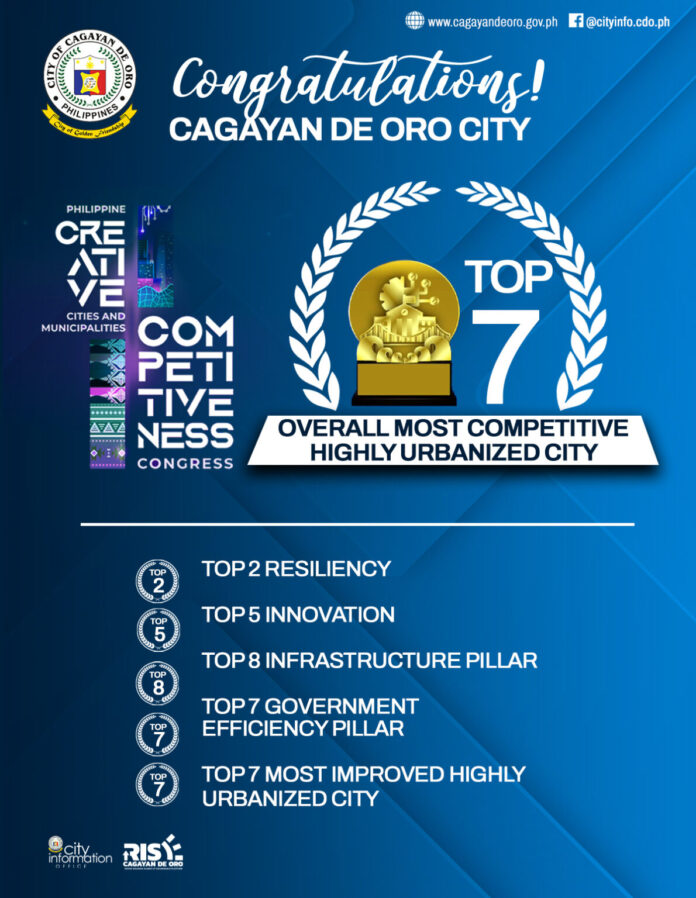After shrinking by 5.3% in 2019-2020, the Northern Mindanao regional economy surged to a 6.3% growth in 2020-2021, a P97.4-B turnaround that spoke volumes of its resiliency. The following year, it surged further by 7.2%.
Performance of the economies of HUCs, provinces, growth rates
Region 10 expanded by 7.2% in 2022, with total GRDP valued at P935 billion at constant 2018 prices. In nominal terms, Northern Mindanao joined the ranks of trillion-peso economies registering P1.07-trillion in total output at current prices last year.
2022 Provincial Product Accounts (NEDA)
These figures showed that the regional economy had not only recovered from the devastating effects of the global pandemic, but how all of Northern Mindanao’s Highly Urbanized Cities (HUCs) and provinces had rebounded as well.
Gross Regional Domestic Product 2022 (NEDA)
According to the Philippine Development Plan, Cagayan de Oro is expected to be the Philippines’ fourth metropolitan area by 2025, based on its projected population growth, strategic location as gateway and logistics hub for Northern Mindanao, and role as a key education center in the south. MetroCDO Map
As the regional center and business hub of Northern Mindanao, the Metropolitan Cagayan de Oro area includes the city of El Salvador; fourteen municipalities of Misamis Oriental (Alubijid, Balingasag, Claveria, Gitagum, Initao, Jasaan, Laguindingan, Libertad, Lugait, Manticao, Naawan, Opol, Tagoloan, and Villanueva); and six municipalities of Bukidnon (Manolo Fortich, Baungon, Libona, Malitbog, Sumilao and Talakag).
During the latest Philippines Cities and Municipalities Competitiveness Index, Cagayan de Oro City ranked as the 7th Overall Most Competitive Highly Urbanized City in 2023, up one rank higher than the previous year. The city was 2nd in Resiliency, 5th in Innovation, 7th in Government Efficiency, 7th Most Improved Highly Urbanized City and 8th in Infrastructure.
According to the Philippine Statistics Authority Region X, Cagayan de Oro City recorded the highest growth rate among the provinces and highly urbanized cities in 2022, expanding at 9.4 percent. Misamis Oriental and Camiguin grew by 9.1% and 8.0%, respectively. The growth rates of these three economies exceeded the 7.2 percent regional growth.
Performance of the economies of HUCs, provinces, growth rates
The City of Iligan (76%) and Misamis Occidental (7.4%) also grew faster than the region’s growth.
Bukidnon (4.4%) and Lanao del Norte (3.0%) economies likewise posted positive albeit lesser economic growth compared to the regional growth rate.
Four out of the seven economies of the region posted accelerated growths. The province with the largest improvement was Misamis Oriental, which recorded an acceleration of 5.2 percentage points from its 3.9 percent growth in 2021. This was followed by Misamis Occidental, Camiguin, and the City of Iligan which registered growths faster by 3.5 percentage points, 3.3 percentage points, and 1.4 percentage points, respectively, than their growth rates in 2021.
Contribution by HUCs, Provinces to Northern Mindanao Economic Growth, 2021-2022
Cagayan de Oro City also registered the highest per capita GRDP during the period topping off with P343.935.00, followed by Iligan City with P214,680.00, way over the regional average of P182,356.00.
Per Capita GDP by HUC, Province in Northern Mindanao, 2022
As presented by the National Economic Development Authority Region X during its recent 2nd Northern Mindanao Socioeconomic Forum, the region is expected to grow its Gross Regional Domestic Product (GRDP) by 6.5 to 8.0 percent annually from 2025 to 2028.
Based on the Northern Mindanao Regional Development Plan 2023-2028, poverty among the population of the region is targeted to decline between 15-17 percent by 2028, while poverty among families is pegged to be reduce between 10 – 12%.
The regional unemployment rate is aimed to be reduced from 5.4% in 2021 to a range of 4-5% in 2028. Underemployment will be brought down from 18.3% in 2021 to below 15% in 2028 to reflect the increase in quality jobs. (with inputs from NEDA/RDC-X and PSA-10)
####






